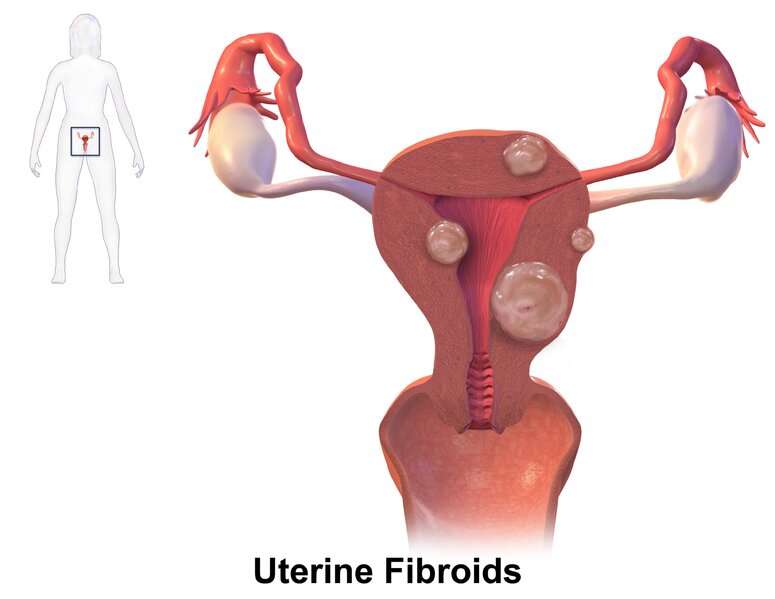
About three quarters of women will experience uterine fibroids before they reach the age of 50. With a range of often debilitating symptoms including excessive menstrual bleeding, they are the most common reason women undergo hysterectomies. And there is a lack of effective treatments—most therapies either only mask symptoms or are difficult for patients to tolerate.
Now, researchers have developed a new, more patient-friendly drug that could revolutionize the way clinicians treat some of the most common gynecologic diseases including fibroids and endometriosis. The clinical trial published September 17 in The Lancet, which included co-first author Hugh S. Taylor, MD, Anita O’Keeffe Young Professor of Obstetrics, Gynecology & Reproductive Sciences and professor of molecular, cellular, and developmental biology, found that linzagolix (brand name Yselty), an oral drug that hinders estrogen production, is an effective and customizable treatment for fibroids. The treatment not only addresses the symptoms, but also tackles the underlying problem through shrinking the fibroids themselves.
“No treatments to date for fibroid growth are something I would ever want my patients to take for a prolonged period of time, as they did not treat the underlying cause of the problem,” says Taylor. “This is an extremely well tolerated class of drugs that can control fibroid growth. We’ve never had anything like that before.”
Fibroids can be debilitating and hard to treat
The impact of uterine fibroids can be devastating. Heavy, prolonged bleeding can significantly disrupt a person’s life—they may need to go through excessive numbers of sanitary pads or tampons, worry about bleeding through and staining clothing, or need to wake up throughout the night to change pads. And profound blood loss may lead to anemia and fatigue. “This can be an impediment to getting a good night’s sleep and being socially active, and it can even affect job performance,” says Taylor.
As fibroids grow larger, they may begin putting pressure on other organs, resulting in a range of unpleasant symptoms including diarrhea or constipation and frequent urination. Fibroids can also lead to difficulty in getting pregnant and increased risk of miscarriage.
Uterine fibroids disproportionately impact Black patients—they are more common and tend to be more aggressive in comparison to white patients.
Most drugs commonly used for uterine fibroids, including birth control pills, fail to treat the fibroids themselves and simply only lighten or stop periods. And more aggressive drugs, although they treat the root of the problem, says Taylor, are “overkill.” For example, leuprolide (brand name Lupron) is an injectable drug that puts patients into a menopausal state by initially overstimulating hormonal receptors, which eventually shuts them down and completely blocks estrogen production. Although the treatment addresses the fibroids, it also can initially exacerbate symptoms and cause harsh side effects. In more extreme cases, patients may choose to undergo a hysterectomy.
Promising clinical trial results
Linzagolix is an oral medication that works similarly to leuprolide by hindering hormone production. However, unlike its predecessor, it works by directly blocking the receptors instead of overstimulating them. The drug is also titratable—clinicians can tailor how much estrogen is blocked in order to best suit an individual patient’s needs without necessarily putting them into a full-blown menopause.
The new drug may cause menopause symptoms such as hot flashes. Hormonal add-back therapy can be an effective option for mitigating these symptoms. For some patients, however, including patients with obesity, hypertension, or diabetes, this therapy has risks and may not be a suitable option. These conditions also tend to be more prevalent in Black patients. In this group, a lower dose of linzagolix without add-back therapy might be preferable.
To test the effectiveness of the drug, Taylor’s team ran two large prospective, randomized, double-blind, placebo-controlled clinical trials known as PRIMROSE 1 and PRIMROSE 2. The studies enrolled patients suffering from substantial bleeding who were randomly selected to receive a placebo or one of several different doses of the drug—100 mg alone, 100 mg with add-back therapy, 200 mg alone, or 200 mg with add-back therapy. The researchers followed the patients and tracked their symptoms for one year. The researchers considered the therapy successful if the patient’s bleeding was reduced by half and also stayed in what is considered the normal range.
Patients in all four treatment groups experienced a significant reduction in menstrual bleeding. The 200 mg with add-back therapy group worked with “amazing efficacy,” says Taylor—the clinical trials showed a 75.5 percent response rate in PRIMROSE 1 and a 93.9 response rate in PRIMROSE 2. Even the lower dose of the drug still showed promising results. There were greater than 60% response rates in both trials for the 100 mg group with add-back therapy, and the 100 mg group without add-back showed better than 50% response rates.
“What is interesting and unique about our trials, that has not been done with other drugs in this class, is that we used a low dose with or without hormones,” says Taylor. “This is a great option for patients who experience severe menopause symptoms from the high dose or have a medical problem where they can’t tolerate hormonal add-back therapy.”
Revolutionizing treatment of gynecologic diseases
Linzagolix is one of several in this new class of drugs in development for the treatment for common gynecologic diseases. Taylor was also involved in the 2017 clinical trial for elagolix, (brand name Orlissa), a medication designed to suppress endometriosis that has recently become available for patients.
Linzagolix has been approved in Europe, but is not yet available in the United States. Taylor says drugs in this class will radically change how clinicians treat fibroids, and he hopes linzagolix will lead to a reduction in future hysterectomies once it becomes available.
Source: Read Full Article